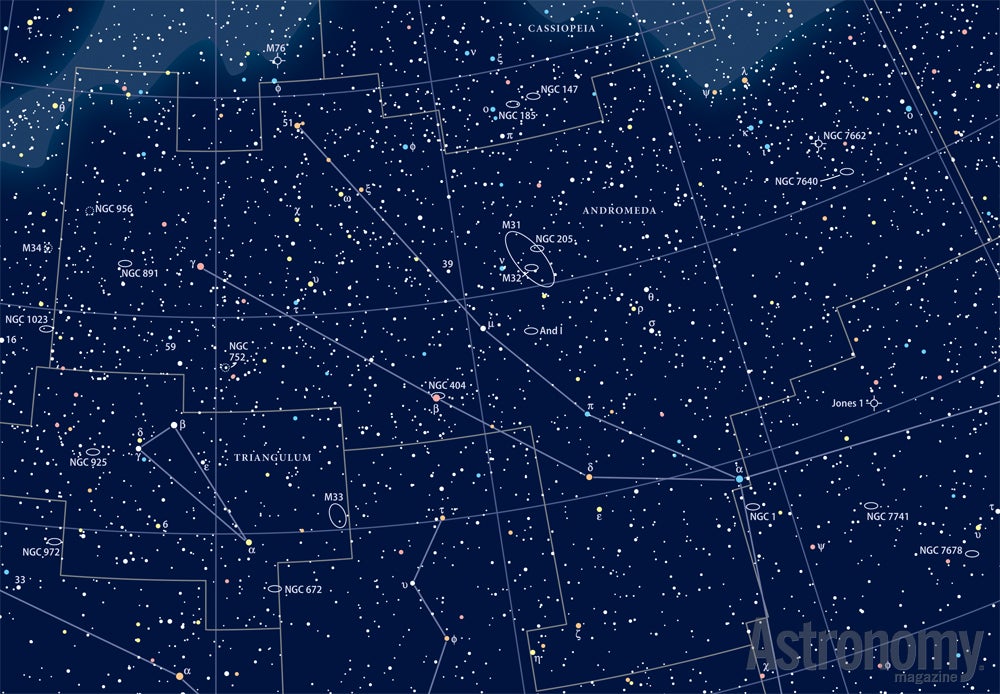Targets for January 1–8, 2015
Small telescope: Open cluster NGC 956
Small telescope: Spiral galaxy Fornax A (NGC 1316)
Large telescope: Elliptical galaxy NGC 1201
This week’s first small-telescope target is open cluster NGC 956 in Andromeda. You’ll find it 5.7° east-northeast of magnitude 2.2 Almach (Gamma [γ] Andromedae).
NGC 956 shines at magnitude 8.9 and spans 6′. Look sharp, though, because it sits in front of a rich Milky Way star field.
This odd cluster has a 9th-magnitude star at both its north and south ends, a couple more 10th-magnitude stars, and about a dozen stars of magnitude 12 and fainter strewn about.
Measurements have shown the two brightest stars are foreground objects only a few hundred light-years away.
Broadcasting from Fornax
This week’s second object, another you can see easily through a small scope, is the powerful radio source astronomers call Fornax A. The “A” refers to it being the first strong radio source found within the constellation. Also known as NGC 1316, this is a relatively bright spiral galaxy you’ll find 1.4° south-southwest of magnitude 6.4 Chi1 (χ1) Fornacis.
It’s pretty big, too. At magnitude 8.9, this object measures 11′ by 7.6′, a size that equals 11 percent that of the Full Moon.
This galaxy’s spiral arms wrap so tightly around its core that it appears elliptical through most telescopes. NGC 1316 isn’t circular, however.
It’s about 50 percent longer than it is wide, and it orients northeast to southwest. You’ll see the broad central region surrounded by a thick halo.
Slightly more than 6′ north of Fornax A lies NGC 1317, a similar spiral that also has tight spiral arms. This galaxy glows at magnitude 11.9.
Starry lens
This week’s large-telescope target is elliptical galaxy NGC 1201, which also lies in Fornax. It glows at magnitude 10.7 and measures 3.6′ by 2.1′.
This target lies 1.3° southeast of magnitude 5.7 Zeta (ζ) Fornacis. NGC 1201 is a fat, lens-shaped galaxy that orients north-south.
The stretched-out central region appears featureless, but you should notice the thin haze that surrounds it.
You’ll also note that the magnitude 10.7 star GSC 6441:848 lies not quite 4′ to NGC 1201’s northeast. This star’s brightness is the same as the galaxy’s, so compare the two to see how the magnitude of a point-source (the star) compares to that of an extended source (the galaxy).
Expand your observing at Astronomy.com
StarDome
Check out Astronomy.com’s interactive StarDome to see an accurate map of your sky. This tool will help you locate this week’s targets.
The Sky this Week
Get a daily digest of celestial events coming soon to a sky near you.
Observing Talk
After you listen to the podcast and try to find the objects, be sure to share your observing experience with us by leaving a comment at the blog or in the Reader Forums.











